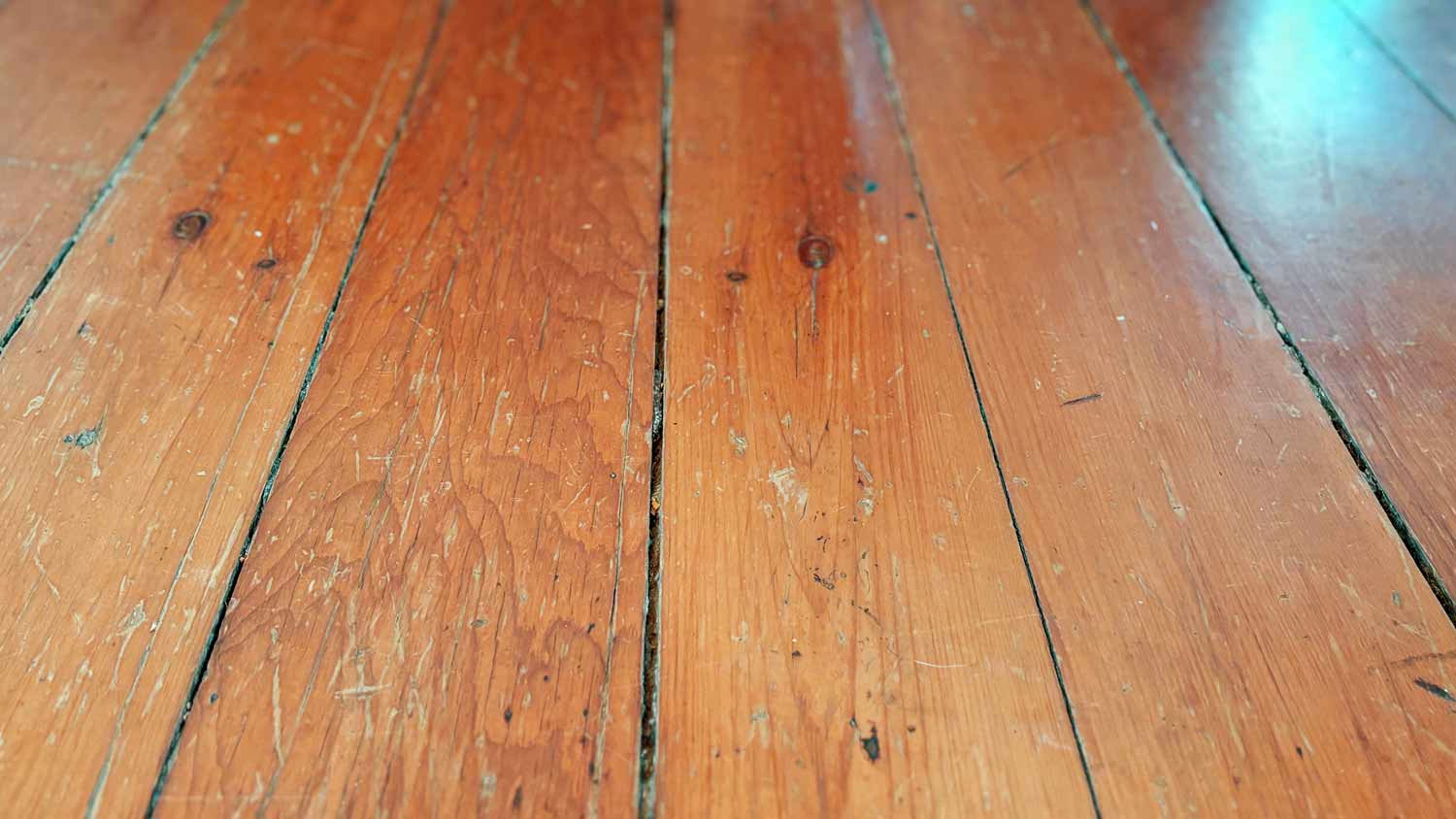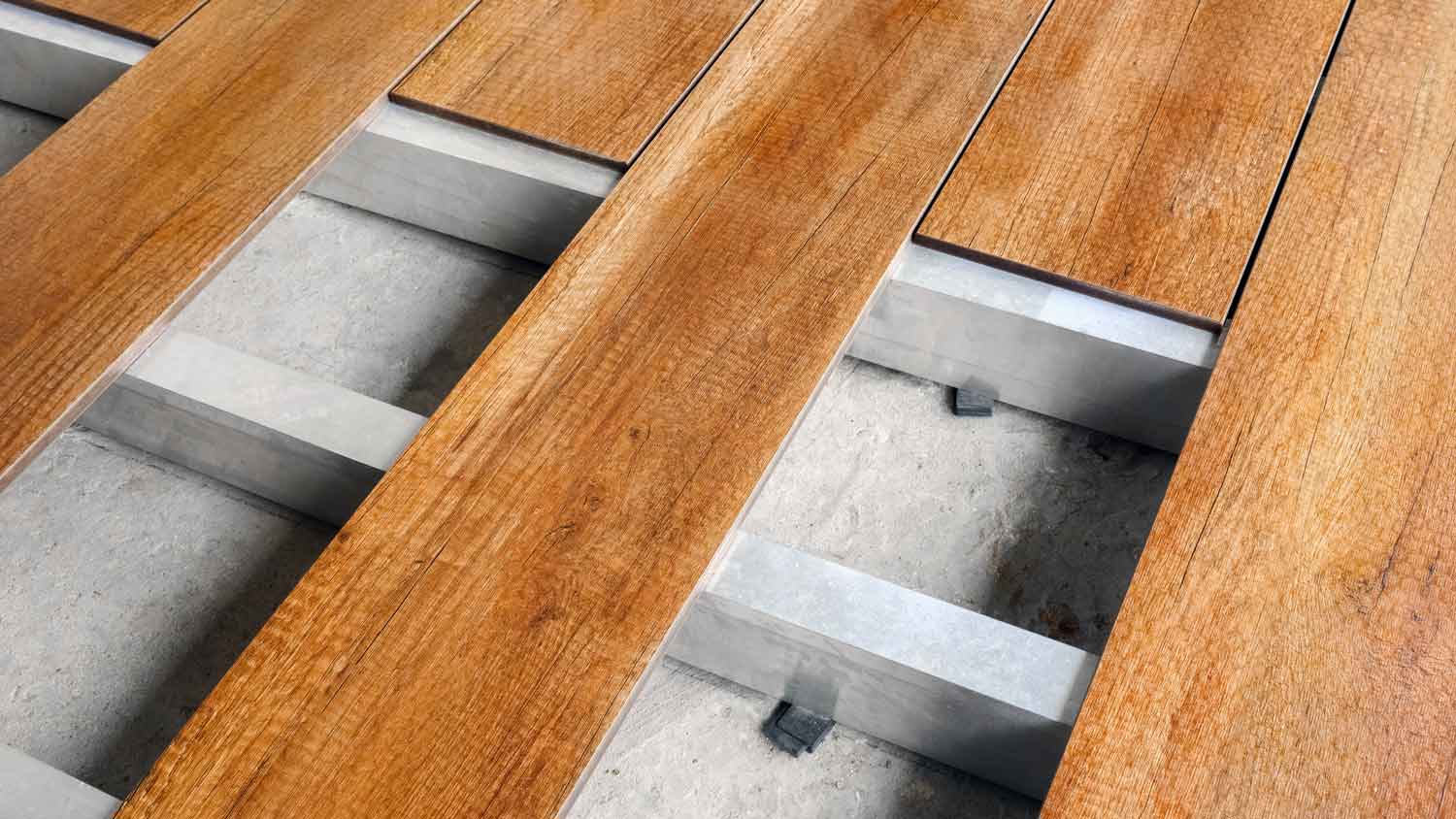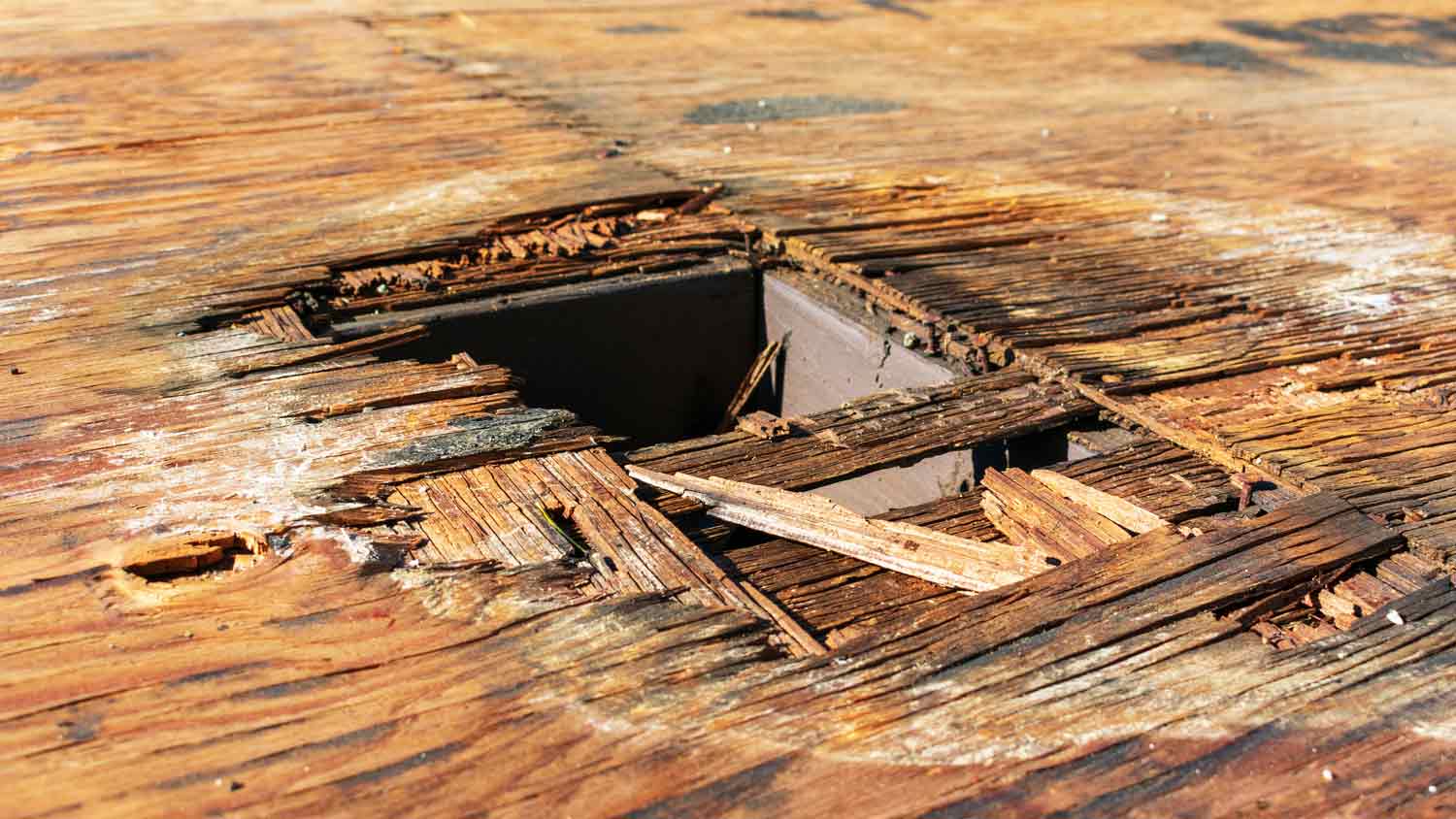
Sustainable, durable, and affordable—these are a few of the benefits of bamboo floors. Here’s a breakdown of bamboo flooring costs to consider.
There’s no creaking around the issue—squeaky floors are usually from friction


Creaky floors are often caused by flooring materials rubbing together.
Loose floorboards can cause this issue.
Creaking may be normal for new floors.
In rare cases, a creaking floor can signal structural damage
Squeaky and creaky floors are one of those annoying things about being a homeowner. Sometimes they happen, especially if you’re in an older home with wooden floors. It’s not usually a big deal, but you may want to fix it so it doesn’t potentially lead to a larger problem later down the line. This guide will teach you why your floors creak and what you should do to solve the issue.

Most floor creaking comes down to the components of the floor rubbing against each other. This can happen if your floorboards are loose—whether it’s because they weren’t nailed properly to the subfloor or the fasteners loosened over time. If it’s the floorboards, you should be able to pinpoint the creak to the affected boards.
Sometimes, silencing your squeaking floor is as simple as filling the gaps with wood filler or lubricating the floorboards. If that doesn’t work, you’ll need to fasten the loose board to the subfloor with a screw.
Damaged, uneven, or improperly installed subfloors, along with subfloors made from the wrong material, can creak. If this is the issue, the floor will creak over a larger area than just a couple of floorboards. Usually, a creak points to a gap between the subfloor and joists or subfloor and floorboards.
It’s a good idea to hire a pro to repair or replace your subfloor. There are several ways to repair a subfloor, depending on the problem. You may be able to shim gaps between the subfloor and joists or fill them with construction glue. In some cases, nailing down the subfloor may work. In other cases, you may need to replace a damaged subfloor. A pro can properly diagnose the issue.

Joists are the main structure beneath your floor, and any issues will cause creaking. This can occur when joists are warped or damaged. It can also occur if they were installed improperly—like spaced too far apart or without the correct blocking. Blocking is essential to stabilizing the joists and preventing movement.
Unless you have previous contracting experience, you’ll need to call a pro to repair the floor joists. For most homeowners, floor joist repair costs $4,000 to $12,000.
Hardwood floors will swell in high temperatures and shrink in cold temperatures. This could cause creaking, and it’s especially common on new floors that haven’t yet adapted to your home’s climate.
New flooring will stop creaking over time or as the weather changes. To solve a longer-term problem, you can install a whole-house humidifier to combat winter dryness or a dehumidifier to combat summer humidity.
In some cases, creaking floorboards aren’t an issue with your flooring. They have to do with your foundation. This could be a result of normal settlement. If a squeaky floor is a structural issue, there will likely be other signs like sagging, sloped or uneven flooring, horizontal cracks in the foundation; cracks where the ceiling and walls meet, or bulging walls.
A foundation inspection can tell you if there’s an issue with your foundation, and then you can take steps to fix it.

Moisture can swell or warp your flooring, which causes creaking as floorboards pull up from the subfloor and rub together. Mold exacerbates the issue by weakening and eventually rotting the floor.
If your floors are warped from water damage, you’ll need to replace them. First, you’ll need to remediate any mold. This requires professional intervention. Hire a mold testing and remediation specialist near you.
If your creaking floor ends up being more than just a simple floorboard fix, you should call a floor repair company near you. This is not a DIY for the average person, though ultra-handy homeowners may be able to take on larger jobs like replacing the subfloor. That said, if you do the work wrong, you could unnecessarily damage your flooring or the utilities below.
Flooring pros deal with issues like this every day. They can promptly diagnose and fix the creak without wasting time (and money) on guesswork.
From average costs to expert advice, get all the answers you need to get your job done.

Sustainable, durable, and affordable—these are a few of the benefits of bamboo floors. Here’s a breakdown of bamboo flooring costs to consider.

Discover vinyl flooring installation costs, including average prices, key cost factors, and tips to save on your new floors.

Linoleum is a popular flooring material because it’s one of the most affordable—but linoleum flooring costs vary from project to project. Let’s break it down.

Updated flooring can make any room in your home feel brand new. Explore flooring installation costs in Tampa, FL, from materials to labor costs.

Updated flooring can make any room in your home feel brand new. Explore flooring installation costs in Washington, D.C., from materials to labor costs.

Dull marble floors got you down? This simple guide on how to polish marble floors can revive your floors to a flawless shine.